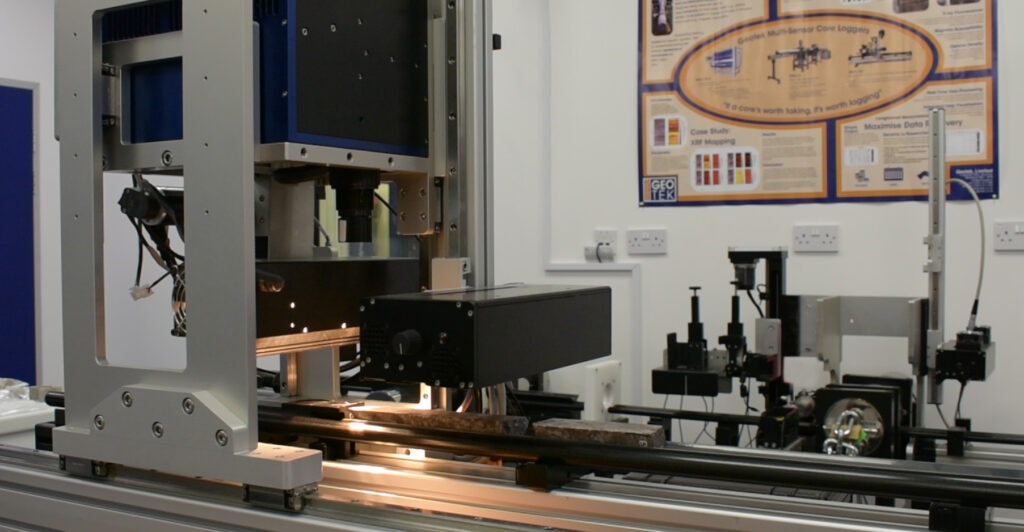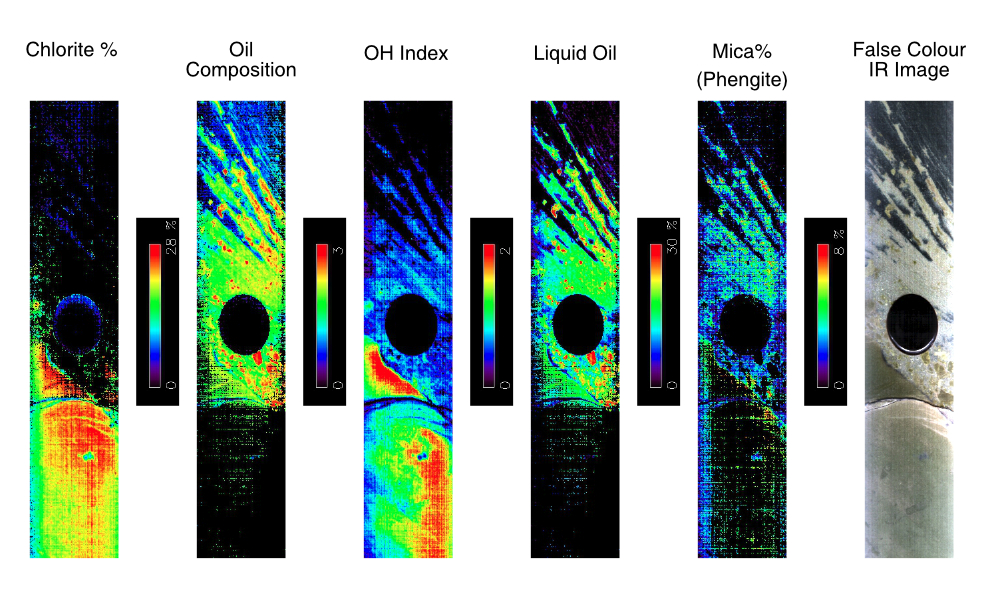Hyperspectral Infrared Spectrometer
The SpecCam 4 hyperspectral camera uses real-time imaging infrared (IR) spectroscopy to identify and produce semi-quantified mineralogy from the surface of rock cores and cuttings. The acquisition of a continuous dataset allows for the production of mineral distribution maps to spatially understand the impact of clay, carbonate or alteration minerals for the geological assessment of oil and gas reservoirs or mineral exploration sites.
The SpecCam 4 hyperspectral camera is available on any of Geotek Multi-Sensor Core Logger (MSCL) platforms (MSCL-S, MSCL-XZ or MSCL-XYZ) and now uniquely offers the ability for users to acquire hyperspectral datasets alongside XRF, magnetic susceptibility, VIS and UV core imaging, and even density/porosity, P-wave velocity or spectral natural gamma all on one core logging platform.





